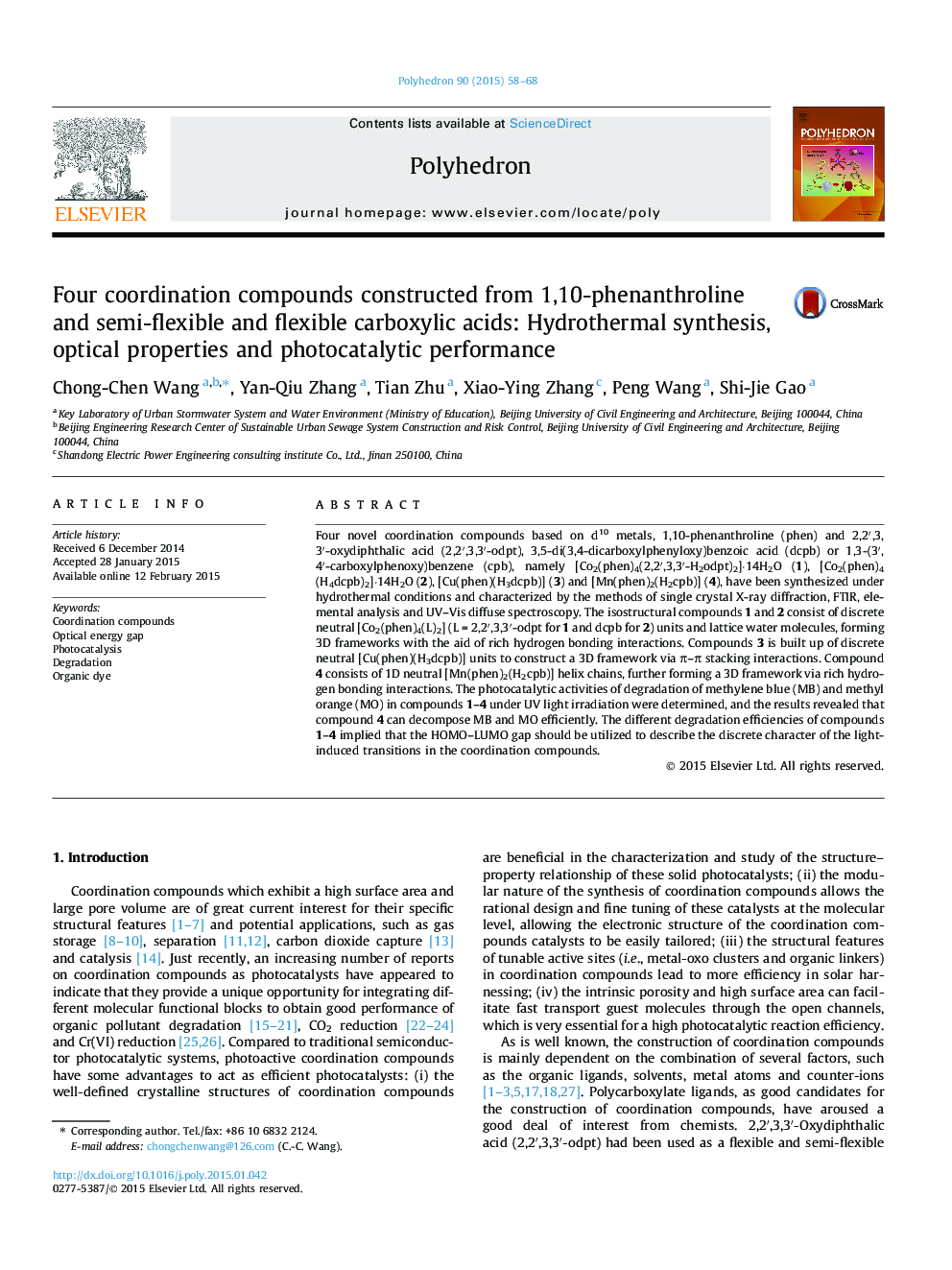| کد مقاله | کد نشریه | سال انتشار | مقاله انگلیسی | نسخه تمام متن |
|---|---|---|---|---|
| 1336125 | 1500249 | 2015 | 11 صفحه PDF | دانلود رایگان |

• Four novel coordination compounds are constructed from 1,10-phenanthroline and semi-flexible or flexible carboxylic acids.
• The title compounds show good photocatalytic efficiency on the degradation of MB and MO.
• The photocatalytic activities and a possible degradation mechanism of the title compounds have been proposed.
Four novel coordination compounds based on d10 metals, 1,10-phenanthroline (phen) and 2,2′,3,3′-oxydiphthalic acid (2,2′,3,3′-odpt), 3,5-di(3,4-dicarboxylphenyloxy)benzoic acid (dcpb) or 1,3-(3′,4′-carboxylphenoxy)benzene (cpb), namely [Co2(phen)4(2,2′,3,3′-H2odpt)2]·14H2O (1), [Co2(phen)4(H4dcpb)2]·14H2O (2), [Cu(phen)(H3dcpb)] (3) and [Mn(phen)2(H2cpb)] (4), have been synthesized under hydrothermal conditions and characterized by the methods of single crystal X-ray diffraction, FTIR, elemental analysis and UV–Vis diffuse spectroscopy. The isostructural compounds 1 and 2 consist of discrete neutral [Co2(phen)4(L)2] (L = 2,2′,3,3′-odpt for 1 and dcpb for 2) units and lattice water molecules, forming 3D frameworks with the aid of rich hydrogen bonding interactions. Compounds 3 is built up of discrete neutral [Cu(phen)(H3dcpb)] units to construct a 3D framework via π–π stacking interactions. Compound 4 consists of 1D neutral [Mn(phen)2(H2cpb)] helix chains, further forming a 3D framework via rich hydrogen bonding interactions. The photocatalytic activities of degradation of methylene blue (MB) and methyl orange (MO) in compounds 1–4 under UV light irradiation were determined, and the results revealed that compound 4 can decompose MB and MO efficiently. The different degradation efficiencies of compounds 1–4 implied that the HOMO–LUMO gap should be utilized to describe the discrete character of the light-induced transitions in the coordination compounds.
A high efficient metal–organic framework (MOF) photocatalyst was introduced to decompose typical organic pollutants, in which the terminology of HOMO–LUMO gap is suggested to describe the discrete character of the light-induced transitions in the MOF.Figure optionsDownload as PowerPoint slide
Journal: Polyhedron - Volume 90, 18 April 2015, Pages 58–68